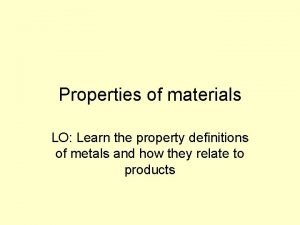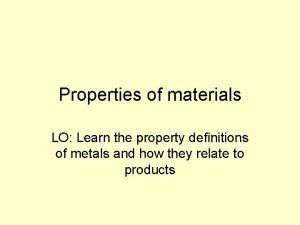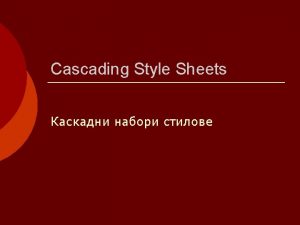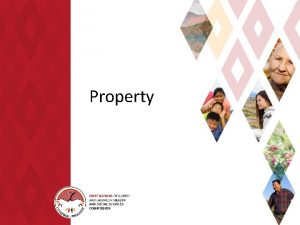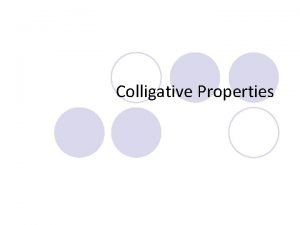Properties of materials LO Learn the property definitions









- Slides: 9

Properties of materials LO: Learn the property definitions of metals and how they relate to products

LO: Learn the property definitions of metals and how they relate to products Hardness HARDNESS The ability of a material to resist scratching, wear and tear and indentation. Challenge question Which will scratch more easily – Pewter or high speed steel? Example test Our technology technician, dressed in a kilt, slides along the floor to see if it will scratch. It will be considered to hard wearing if it resists scratching. Hardness in a product Key words – Tensile strength, hardness, toughness, elasticity, conductivity, ductility, malleability

LO: Learn the property definitions of metals and how they relate to products Toughness TOUGHNESS A characteristic of a material that does not break or shatter when receiving a blow or under a sudden shock. Example test Our technology technician demonstrates the ‘toughness’ of a material by hitting a piece of material to see if it will break or shatter Toughness in a product Key words – Tensile strength, hardness, toughness, elasticity, conductivity, ductility, malleability

LO: Learn the property definitions of metals and how they relate to products Elasticity ELASTICITY The ability of a material to absorb force and flex in different directions, returning to its original position. Example test Our technology technician demonstrates the ‘elasticity’ of a material by springing up and down on a piece of steel rod. Elasticity in a product Key words – Tensile strength, hardness, toughness, elasticity, conductivity, ductility, malleability

LO: Learn the property definitions of metals and how they relate to products Ductility DUCTILITY The ability of a material to change shape (deform) usually by stretching along its length. Example test Our technician stretches the lead above his head. As it stretches if deforms (changes shape). Ductility in a product Key words – Tensile strength, hardness, toughness, elasticity, conductivity, ductility, malleability

LO: Learn the property definitions of metals and how they relate to products Malleability MALLEABILITY The ability of a material to be reshaped in all directions without cracking Example test Hammer a material into a flat sheet. Malleability in a product Key words – Tensile strength, hardness, toughness, elasticity, conductivity, ductility, malleability

LO: Learn the property definitions of metals and how they relate to products Conductivity A measure of a material's ability to conduct an electric current. Example test Will electrical current pass through the material Example product Key words – Tensile strength, hardness, toughness, elasticity, conductivity, ductility, malleability

Complete the exam questions

Hardness - is a measure of how resistant solid matter is to various kinds of permanent shape change when a compressive force is applied e. g scratching Toughness - the ability of a material to withstand shock loading. It is the exact opposite of "brittleness" which carries the implication of sudden failure. Ductility - is a solid material's ability to deform under tensile stress; this is often characterised by the material's ability to be stretched into a wire Ferrous metals contain Iron in its natural from is quite soft. It is therefore combined with carbon to improve its properties. Different ratio’s of iron and carbon create different metals. Non-ferrous metals do not contain iron. Are not magnetic. Generally corrosion resistant. Alloying different metals together creates new metals with enhanced properties. Two or more metals can be mixed together to create an alloy. Alloying metals can change – melting points, colour, strength etc


